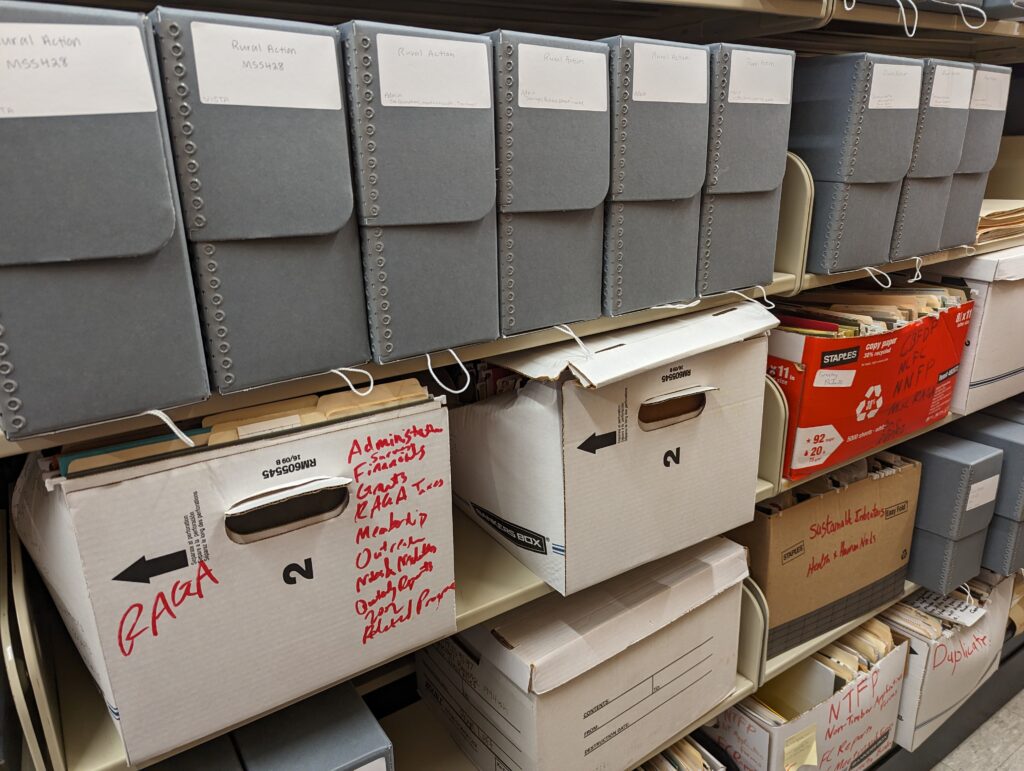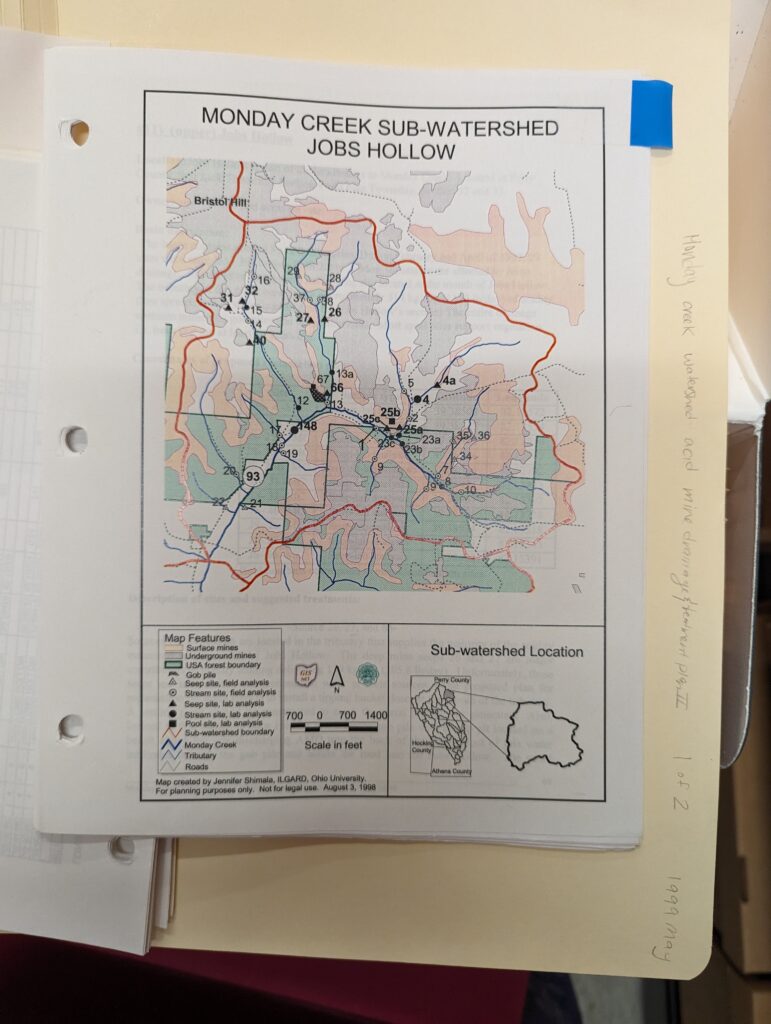By Yashvita Kanuganti, Linguistics and HTC Religious Studies ‘26, Fall 2023 Manuscript Archives Assistant

When I first moved to Athens for college, one of the organizations I heard mentioned frequently was Rural Action. I knew generally of the work they did: sustainable development on the local level, spanning from food and agriculture to forestry. However, since working as an Archives Assistant in the manuscripts collection this semester, I’ve spent a lot of time becoming acquainted with the historic legacy of Rural Action through processing a variety of their records that were donated back in 2019. Many of these records are in binders or loose in boxes, so for processing I am putting papers into folders and making sure each folder has a title and a date. Though I’ve only processed a small amount in comparison to the volume of the collection, I have been fortunate enough to learn a great amount about what the organization has both done and continues to do.

One of the first sub-sections I processed included records of Rural Action’s history with watershed planning and reporting. While I wasn’t familiar with the factors that go into surveying and tracking these areas, I quickly realized the extensive monitoring that goes into their establishment and upkeep. I filed and categorized records for a few different watersheds, including Monday and Sunday Creek. I was especially intrigued by the sheer detail that went into the Acid Mine Drainage Abatement and Treatment (AMDAT) plans. In going through these AMDAT plans, I was able to look at the meticulous records that were kept on these watersheds—filed as “Long Term Monitoring”. These sections included pages and pages of field sheets ranging from October of 1998 to July of 2000, and even beyond. Even from this small vignette of records, it was clear to me the attention to detail and care that permeates every sector of Rural Action’s projects.
Recently, I’ve just begun processing a section that entails some of the most poignant collaborations Rural Action has had with local community in arts and culture. I found this to be especially interesting, as I was able to read through many different types of media and partnerships, including a well-documented history of Rural Action’s relationship with Ohio University. The depth of their connection through service learning was compelling because of the two’s decades-long history. Besides the service components, I’ve also found interest in learning about the many mural projects the organization was a part of. The initial boxes included binders full of past artist contracts and commissions, as well as references for some of the work that was done. I am looking forward to processing the collection further and getting a chance to look at these murals in the context of the archives.
Getting the opportunity to process this kind of history has been an incredible experience. From the meticulously recorded data of the watersheds to the depth of community engagement connections, I have been able to experience first-hand the variety and breadth of the work that Rural Action does. Filing away these boxes and records has given me a window into Rural Action’s profound history, across all of their fields, in all the work they do.
To learn more about Rural Action check out their website.